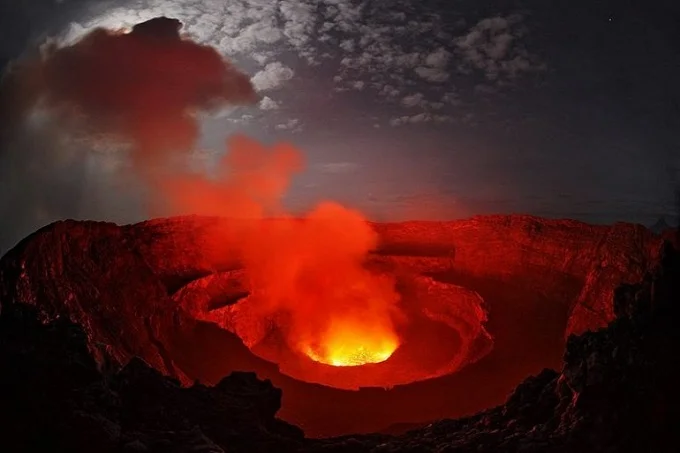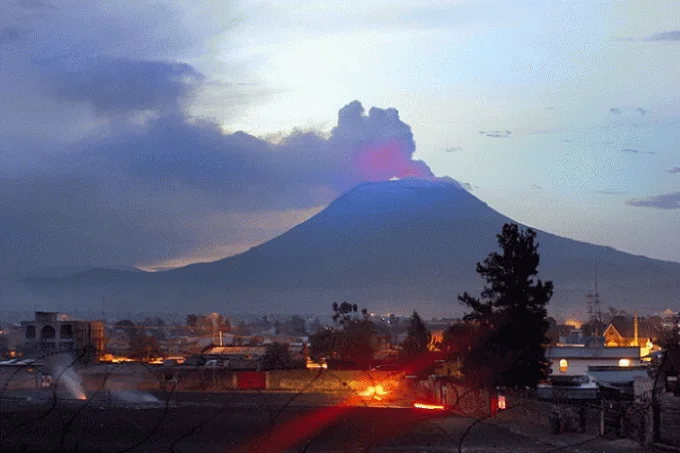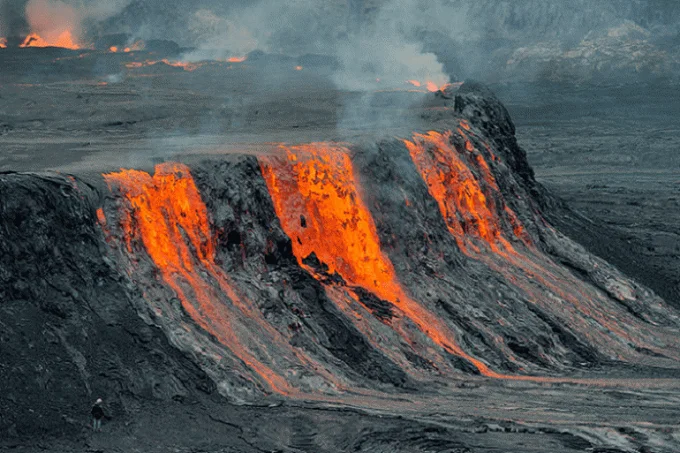Nyiragongo volcano: home for world biggest lava lake

Nyiragongo, one of the world’s most deadly volcanoes, has erupted 34 times since 1882 and is home to the world’s biggest lava lake. At night, when Mount Nyiragongo boils and shines, it is exceptionally beautiful.
Although the land at the foot of Mount Nyiragongo is littered with diverse human communities, it is arguably the last location on Earth you’d want to dwell, despite the continual fear of catastrophic fire death.

Nyiragongo Volcano Interesting Facts
- The Nyiragongo volcano combines a totally unique set of characteristics for which volcanologists are educated. Specialists from all over the globe come to study this geological marvel.
- While the size of its lava lake varies, the quantity of lava contained on average makes it the world’s biggest normal lava lake.
- The lava from this volcano is likewise exceedingly liquid in consistency. Because of the extremely large quantity of alkaline-rich volcanic rocks, this is the case.
- The slope of Nyiragongo is quite steep. This, along with the lava’s liquid fluidity and closeness to inhabited regions, makes it a very hazardous volcano.
What type of volcano is mount Nyiragongo
Nyiragongo (sometimes called Niragongo) is considered a huge stratovolcano. It is situated near Lake Kivu on the eastern border of DR Congo and Rwanda in the Virunga National Park, and is one of the world’s most magnificent and active volcanoes. It features a peak caldera with a diameter of 1.2 km, which houses the world’s most active and biggest lava lake.

Nyiragongo’s geological characteristics
A great example of a stratovolcano is the Nyiragongo volcano. It’s also still quite active, and with a height of 3,470 meters, it’s one of the world’s tallest volcanoes. Furthermore, the major crater is about 2 kilometers in diameter. Another notable feature is the lava lake, which has an average depth of 600 meters.
The nature of the lava, however, is the most defining attribute of Nyiragongo. The lava flows quickly down steep slopes due to its exceptionally high alkaline ratio. As a consequence, down the hill, flow velocities approach 100 km/h. This is where scientists have recorded the fastest velocity of the incandescent flow presently known to man due to the combination of the slope and the viscosity of the lava.
The Nyiragongo volcano is found in the Democratic Republic of Congo’s Virunga National Park. The closest populated region is just 20 kilometers away.

Volcanologists know very little about previous eruptions, although the volcano’s current activity is thoroughly recorded and investigated. The volcano has erupted 34 times since 1882.
Furthermore, some of these eruptions have lasted for years. This volcano is made up of hundreds of tiny cones that overlay numerous older volcanoes. Nyiragongo Volcano was selected Volcano of the Decade in 1991 because of its unique threats. The Goma Volcano Observatory found a new vent on the northeastern border of the crater in March 2016.




